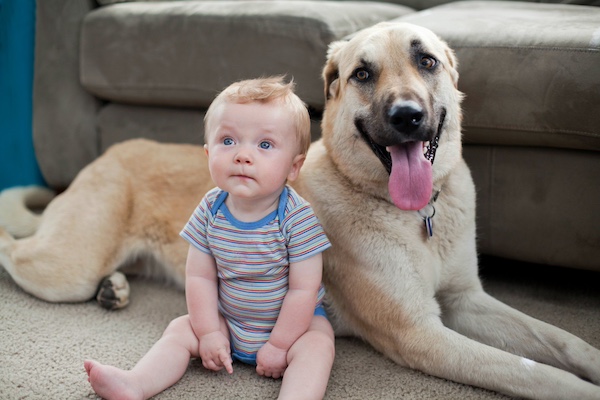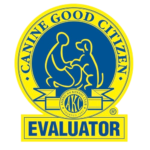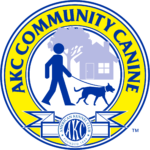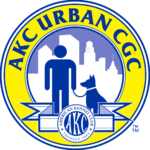The arrival of a new baby is an exciting and life-changing event for any family. However, the changes that come with a newborn can be challenging for your dog, who may feel confused or anxious about the new addition to the household.
Preparing your dog for the arrival of a baby is crucial to ensure a smooth transition and to maintain a safe and harmonious environment for both your pet and your growing family. Here are some practical tips to help you and your dog prepare for this significant life event.
Understanding Your Dog’s Perspective
Dogs are creatures of habit, and they thrive on routine and familiarity. When a new baby arrives, your dog’s environment and daily routine will inevitably change, which can be unsettling. It’s important to understand that your dog may not immediately grasp what’s happening, but they will sense the changes in the household.
Your dog may experience stress or anxiety as they adjust to the new sounds, smells, and activities that come with a baby. Common signs of anxiety in dogs include pacing, whining or panting, excessive barking, or even regression in house training. By understanding your dog’s perspective, you can better address their needs and help them feel secure during this time of change.
Gradual Introduction to New Sights, Sounds, and Smells
One of the most effective ways to prepare your dog for a new baby is to gradually introduce them to the sights, sounds and smells associated with a newborn. This helps your dog become familiar with these changes before the baby arrives, reducing the chances of them feeling overwhelmed.
Start by bringing baby-related items into your home, such as a crib, stroller, and toys. Allow your dog to explore these items at their own pace. In addition to visual changes, you can also acclimate your dog to the sounds of a baby by playing recordings of baby noises, such as crying or cooing, at a low volume and gradually increasing it.
Lastly, introduce your dog to the scents associated with a baby. Allow your dog to sniff baby lotion, powder, or blankets that have been used by a baby. Familiarity with these scents will help your dog feel more comfortable when they encounter them on the baby.
Establishing New Routines Early
Dogs are creatures of habit, and any significant changes to their routine can cause anxiety. To minimize stress, it’s a good idea to start adjusting your dog’s routine well before the baby arrives. This allows your dog to gradually adapt to the changes and reduces the likelihood of them associating the new baby with disruptions to their routine.
Begin by shifting your dog’s feeding, walking, and playtime schedules to align more closely with the routine you anticipate having once the baby is home. Gradual adjustments are key—abrupt changes can be confusing and stressful for your dog.
Additionally, consider creating a designated space for your dog that will remain consistent after the baby’s arrival. This space should be a safe and comfortable area where your dog can retreat when they need some quiet time. Having a consistent space where they feel secure will help your dog cope with the changes in the household.
Teaching Basic Obedience and Boundaries
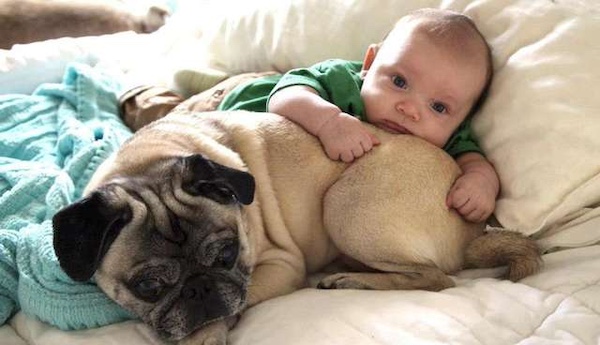
Basic obedience training is essential for ensuring that your dog behaves appropriately around the baby. If your dog hasn’t already mastered commands like “sit,” “stay,” and “leave it,” now is the time to reinforce these behaviors. These commands will help you maintain control in situations where your dog might otherwise become overly excited or curious around the baby.
In addition to basic obedience, it’s important to establish clear boundaries around baby-specific areas, such as the nursery or the baby’s sleeping area. Teach your dog to respect these boundaries by using commands and positive reinforcement.
Another important aspect of preparation is teaching your dog to behave gently around small children. Encourage calm and gentle interactions by rewarding your dog with treats and praise when they remain calm around babies or small children.
Managing the First Introduction Between Dog and Baby
The first introduction between your dog and your new baby is a critical moment. It’s important to approach this introduction with care to ensure that it’s a positive experience for both your dog and the baby.
When you bring your baby home, greet your dog calmly without the baby in your arms. Once your dog has settled down, you can allow them to approach the baby under close supervision. Keep the introduction short and positive, allowing your dog to sniff the baby gently while you provide reassurance.
It’s important to monitor your dog’s behavior during this first interaction. Look for signs of stress, such as excessive licking, whining, or attempts to jump on the baby. If your dog shows any signs of discomfort, calmly redirect their attention and give them some space.
Maintaining Positive Reinforcement and Attention
After the baby arrives, it’s easy to become preoccupied with the demands of caring for a newborn. However, it’s essential to continue giving your dog attention and positive reinforcement to prevent feelings of neglect or unease. Dogs thrive on routine and attention, and maintaining a bond with your dog during this time will help them adjust more easily to the new family dynamic.
Make a conscious effort to spend quality time with your dog each day, whether through walks, playtime, or simply cuddling. Additionally, positive reinforcement should be used to reward calm and appropriate behavior around the baby. For example, when your dog sits quietly while you’re feeding the baby, offer them a treat and some praise. This reinforces the idea that calm behavior around the baby is desirable.
Balancing attention between your dog and the new baby can be challenging, but with patience and consistency, you can ensure that both your dog and your baby feel loved and secure.
Conclusion
Preparing your dog for the arrival of a new baby is an important step in ensuring a smooth transition for your entire family. By understanding your dog’s perspective, gradually introducing them to new sights, sounds, and smells, and reinforcing basic obedience and boundaries, you can help your dog adjust to the changes ahead.
Remember that patience and consistency are key to a successful transition. With the right preparation, your dog and your new baby can develop a strong and loving bond that will last a lifetime.

